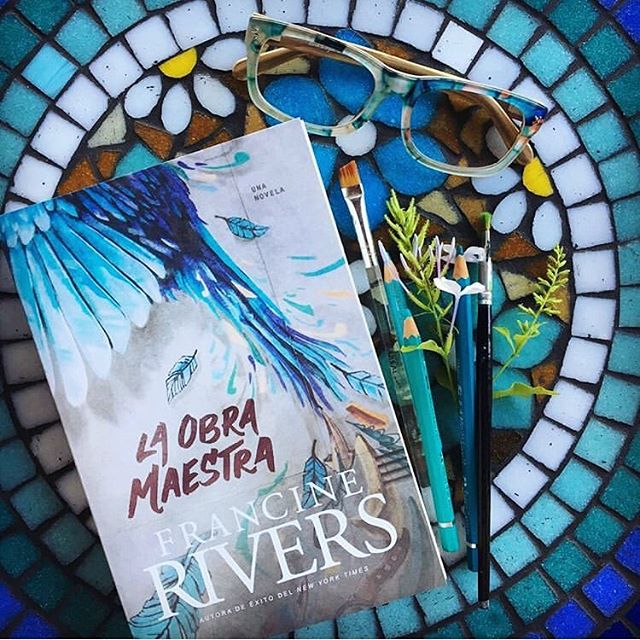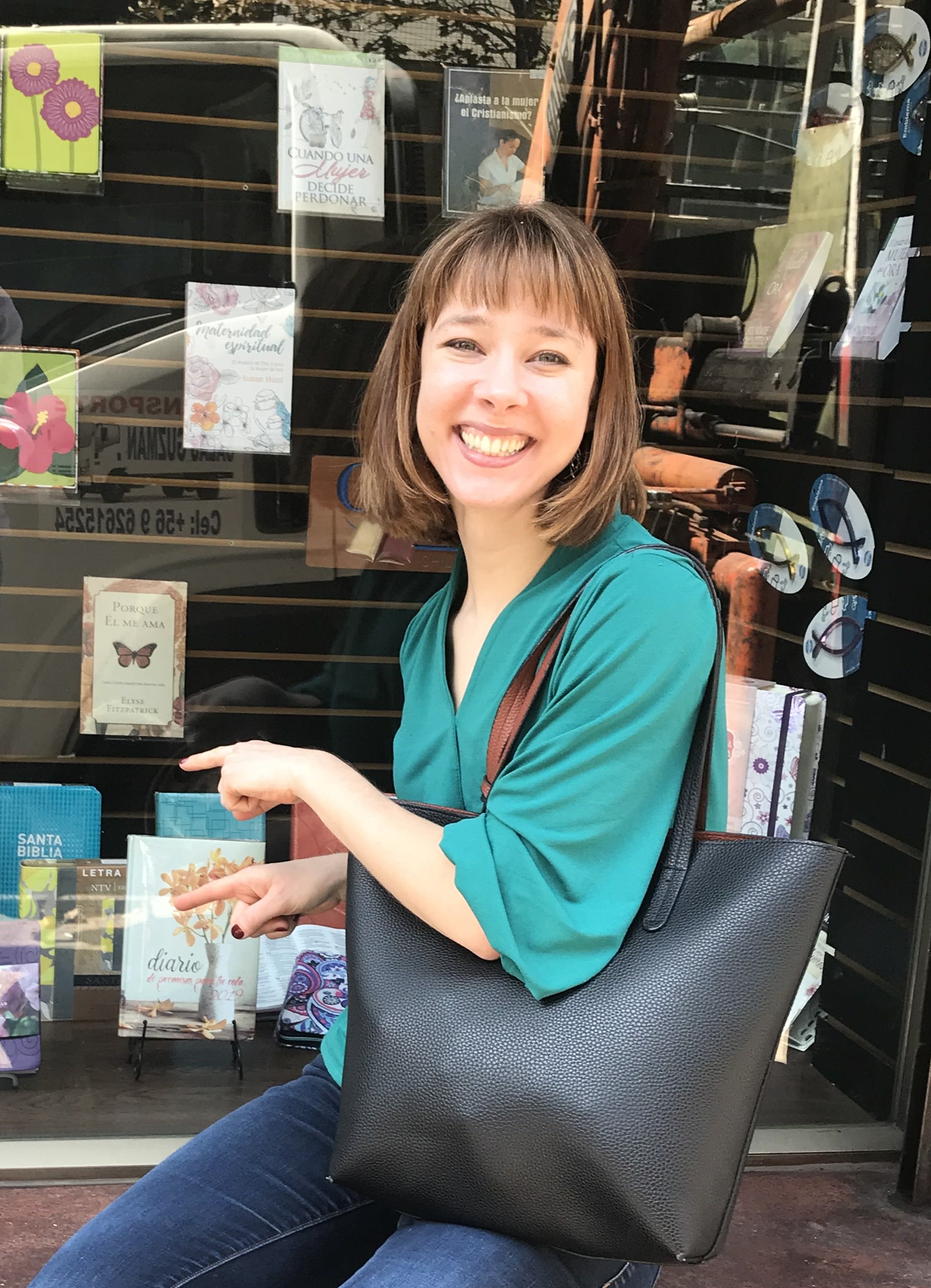
Hispanic Heritage Month falls between September 15 and October 15 every year and celebrates Americans whose culture, history, and ancestry has roots in Spain, Mexico, the Caribbean, and Central and South America.
To celebrate, Crazy4Fiction asked Christine, the Tyndale Español editor for fiction, to give readers an inside look into what it takes to turn a Tyndale Fiction book into a Tyndale Español novel.
How does the Spanish team pick which Tyndale Fiction novels to translate into Spanish? What does the process for selecting a novel to translate look like?
For both fiction and nonfiction, the director of Tyndale Español chooses what he thinks will appeal to the Spanish market, and then he presents his proposals to a publication committee that looks at the costs of buying Spanish-language rights, paying for a translation, and production expenses compared to the sales projections.
It’s actually harder than you might think to find novels that will translate to a different culture. Although the broad themes might be universal, many stories are dependent on problems and motivations that don’t necessarily carry the same weight in a different context. The other issue we run into is that a fiction book can seem like a luxury in places where a lot of people struggle to make ends meet, like some countries in Latin America. So we have to choose carefully what books we think will be worth our readers’ investment. Our readers definitely love Francine Rivers, and we’ve seen good sales with movie tie-ins like War Room in Spanish. I’m a firm believer in the power of a good fiction book to minister to people’s spiritual needs, so I get excited when we find a novel that’s a good match for our Spanish market.
What’s the process like for taking an English-language novel and translating it into a Spanish edition? How long is that process? How many people are involved?
We have long-term relationships with quality translators in countries like Argentina and Guatemala, and when we send them an English manuscript we know it’ll come back in good shape. Usually we give the translator about three months for an average-length book, but there have been times when we’ve had to ask for a much shorter timeline, especially if a Spanish-language book needs to release on the heels of the English book—for example, to accompany a movie release.
After the translator finishes his or her work, a Tyndale editor and two copyeditors comb over the translation, comparing it phrase-by-phrase with the English original to check for faithfulness and consistency. We’ve found it can be a good combination to have our in-house team working in an English-speaking context to catch things that might not make sense to a translator working outside the US. I love teamwork! Later, after the manuscript is laid out on the page, we also have proofreaders to catch spelling and other detailed errors and be a last check that the translation stands on its own in Spanish.
Since there are many different Spanish dialects across the many Spanish-speaking countries, is there a standard version of Spanish that’s used when translating Tyndale Fiction?
This is definitely tricky! We’re trying to cater to readers who speak with as many differences as there are between Canadian and Jamaican English. We try to use terms that will be understandable in as many countries as possible, and we try to avoid words that might come across as offensive to some people. Sometimes there is no “neutral” term, and we have to decide which word will cause the least misunderstanding. We purposefully try to include people with different flavors of Spanish on our editorial team for situations such as this.
To give an example, the translation for “high school” that I grew up with (secundaria) means “middle school” in Mexico. But the terms used in Mexico (preparatoria or bachillerato) refer to prep school or university education in other countries. That’s where I as editor have to make a choice: for this book, would I rather risk misunderstanding in terms of age or the socioeconomic level of the characters?
Do you have a certain translation theory across the board (for example, trying to translate word for word or translating for the intended meaning of the sentence), or does it vary project to project?
I believe a translation is most faithful when it’s able to match the tone and nuances of the original text. This is why good translation is such an art: translating word for word, like machines do, often produces sentences that don’t make sense. And it’s not the same story if you lose a character’s dry humor or a sudden shift in the dynamic of a relationship. We aim for a readable Spanish that will mirror the impact of the original English as closely as possible.
What are some differences between how you might translate a biblical fiction title, a contemporary fiction novel, or a movie novelization? What are some of the unique challenges you might come across while translating different types of stories?
Good question! Biblical fiction like the Lineage of Grace series or Ben-Hur requires us to do a lot of research to make sure we a) understand what historical place or thing the author is referring to and b) use the accepted Spanish spelling for the Greek or Hebrew word. With contemporary fiction we feel more confident we know what technology is being referenced and which places are real versus made up, but those stories tend to be more tied to American culture.  With movie novelizations like War Room or Overcomer, there’s the extra challenge of wanting to match translation choices made for the Spanish version of the movie, so that people don’t get confused if, for example, a school has a slightly different name in the Spanish-language movie and the Spanish-language book.
With movie novelizations like War Room or Overcomer, there’s the extra challenge of wanting to match translation choices made for the Spanish version of the movie, so that people don’t get confused if, for example, a school has a slightly different name in the Spanish-language movie and the Spanish-language book.
Have you ever changed any cultural aspects of a book so that it could be better understood by the Spanish-language audience?
Culture is so baked into the characters and plot of a fiction book, definitely more so than with nonfiction. . . We sometimes add a few words of explanation but don’t try to change aspects that are intrinsic to the story. For example, we usually don’t translate characters’ names—Grace in The Masterpiece is also called Grace in the Spanish version (rather than Gracia), because the fact that she’s an English-speaking American is important to her character.
What’s been your favorite Tyndale Fiction translation project you’ve worked on so far?

I think my favorite so far has been La obra maestra (The Masterpiece) because of the really fascinating characters and beautiful themes of forgiveness. For that book, we also had an interesting translation challenge deciding on when to switch from Spanish’s formal you to informal you in the dialogue between Grace and Roman—it was trickier than usual! The Masterpiece is a book I would have enjoyed reading for fun even if I hadn’t been paid to work on it, and I got to spend several weeks immersed in that story while on the clock.
What are some of the specific countries or regions where Tyndale Spanish books are especially welcomed?
Tyndale Español books are in bookstores in at least 20 countries, and one of our sales reps tells me fiction books do particularly well in Colombia.
On a recent trip to Chile, the country where I grew up, I enjoyed walking into a Christian bookstore in downtown Santiago and seeing Tyndale books displayed in the window and on the shelves. It was even more fun to talk with the bookstore staff and hear which novels have resonated with them personally and which ones they recommend to readers!

Anything else our readers should know?
Are there any Tyndale Fiction books you think would do particularly well in Spanish? I’d love to hear your ideas!



